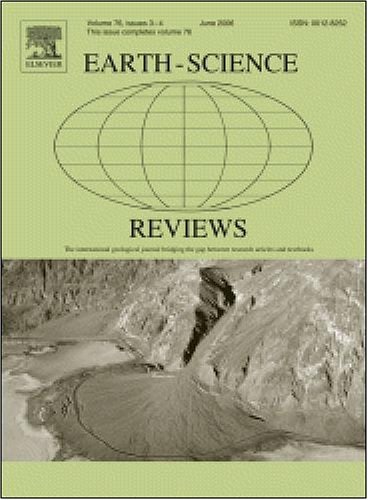地质描述方法和分类方案是否适合将来使用?角砾岩就是一个例子
IF 10
1区 地球科学
Q1 GEOSCIENCES, MULTIDISCIPLINARY
引用次数: 0
摘要
同行评议的地球科学研究文献,其广泛的定量、半定量和定性信息,是否适合用于人工智能(AI)应用——既可以作为机器学习的潜在训练数据集,也可以作为帮助研究人员跟上最新研究的工具?我们通过研究碳酸盐岩角砾岩文献中的数据收集和报告哲学和实践来解决这个问题-这些岩石产生了一系列定性和定量数据。这些角砾岩可以在许多不同的环境中通过广泛的过程形成。准确解释它们的形成机制对于许多不同的地球科学应用都很重要,从环境重建到了解地下流体流动。研究了7种不同类型的碳酸盐岩角砾岩,总结了它们的形成机制和特征,并以此分离出对其描述和解释最有价值的角砾岩特征。然后,我们检查了59个已发表的案例研究和8个角砾岩分类方案,发现案例研究中对角砾岩特征的报道不一致。在研究和分类方案中最常报道的特征是所有角砾岩类型所共有的,诊断价值低,而一些最有价值的解释特征(如碎屑边界的性质)是最少报道的。我们建议对所有碳酸盐角砾岩研究进行一系列观察,并建议明确记录负面观察结果。如果没有这一点,在人工智能应用中使用已发表的文献可能会产生不可靠的结果。本文章由计算机程序翻译,如有差异,请以英文原文为准。
Are geological description practices and classification schemes fit for future use? Breccias as an example
Is peer-reviewed geoscience research literature, with its extensive quantitative, semi-quantitative, and qualitative information, fit for use for artificial intelligence (AI) applications – both as potential training datasets for machine learning, and as a tool to help researchers keep up to date with the latest research? We address this question by examining data collection and reporting philosophies and practices in the literature for carbonate breccias – rocks that yield a spectrum of qualitative and quantitative data. These breccias can form by a wide range of processes in many different environments. Accurate interpretation of their formation mechanism can be important for many different geoscience applications, from environmental reconstructions through to understanding subsurface fluid flow.
We explore 7 different types of carbonate breccia summarising their formation mechanisms and characteristics and use this to isolate the breccia characteristics most valuable for their description and interpretation. We then examine 59 published case studies, and 8 breccia classification schemes and find that reporting of breccia characteristics is inconsistent between case studies. The characteristics most often reported in research and used in classification schemes are common to all breccia types and are of low diagnostic value, while some of the most valuable characteristics for interpretation (e.g. nature of clast boundaries) are the least reported. We propose a suite of observations that should be made for all carbonate breccia studies and recommend that negative observations should be explicitly recorded. Without this, using published literature in AI applications is likely to yield unreliable results.
求助全文
通过发布文献求助,成功后即可免费获取论文全文。
去求助
来源期刊

Earth-Science Reviews
地学-地球科学综合
CiteScore
21.70
自引率
5.80%
发文量
294
审稿时长
15.1 weeks
期刊介绍:
Covering a much wider field than the usual specialist journals, Earth Science Reviews publishes review articles dealing with all aspects of Earth Sciences, and is an important vehicle for allowing readers to see their particular interest related to the Earth Sciences as a whole.
 求助内容:
求助内容: 应助结果提醒方式:
应助结果提醒方式:


